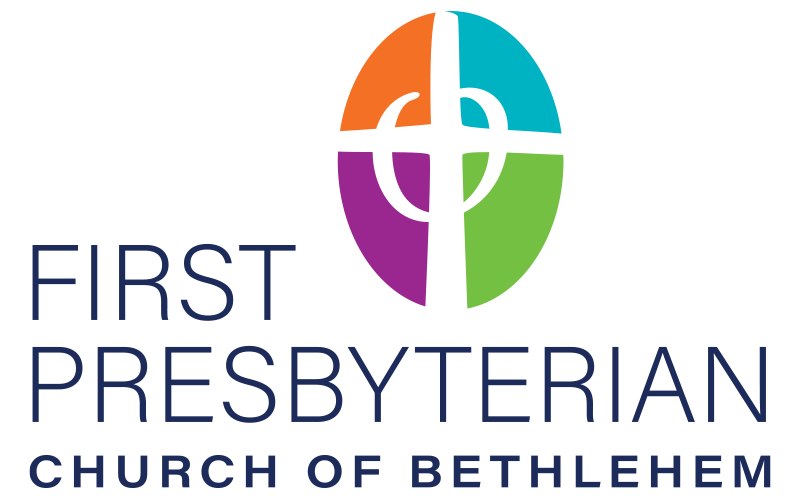By The Rev. Lindsey Altvater Clifton
I don’t know about you, but when I’m feeling overwhelmed or stressed or anxious or in a blue funk…one of the first tools in my emotional self-regulation toolbox is to take a walk. Usually, the movement and motion get me out of my head and into my body; the sights and sounds get me out of my feelings and into the present moment; and the focused breathing in and breathing out get me to a place of centered calm and clarity.
Sometimes I walk on my own (with or without music depending on my mood); sometimes I walk and talk with Laura or while I’m on the phone with a friend or family member. But as I’m walking, I’m usually trying to work through or make sense of something going on in my life or in the world.
depending on my mood); sometimes I walk and talk with Laura or while I’m on the phone with a friend or family member. But as I’m walking, I’m usually trying to work through or make sense of something going on in my life or in the world.
In a similar way, Cleopas (who is definitely a disciple I don’t remember) and his unnamed friend are walking to Emmaus. They’re making this seven mile journey later in the day of Jesus’ resurrection.
At early dawn that very morning, Mary Magdalene, Joanna, Mary the mother of James, and the other women with them had found the stone rolled away from the tomb, and heard from a pair of men in dazzling clothes that “He is not here, but has risen.” They shared this with the disciples, “but these words seemed to them an idle tale,” the text says, “and they did not believe them.”
Seemingly not until one of the men, Peter, jumped up and ran to the tomb, saw the linen cloths by themselves, and returned amazed. (This is not the first or last time that women have proclaimed some Gospel truth that men refused to hear or believe until some other man said the same thing…ladies, can I get an amen?)
But back to today’s text: now for unknown reasons, this pair of disciples—Cleopas and his unnamed buddy—are making the seven mile journey along the road from Jerusalem to Emmaus. It is probably a road they’ve taken before but they are absorbed in conversation about all the things that have happened—they are immersed in their confusion and grief, their frustration and misunderstanding. In the midst of all that, they struggle to orient themselves to anything that feels even vaguely normal or familiar.
And that’s just when Jesus shows up. He’s right there walking and talking with them! But the text says, “their eyes were kept from recognizing him.” They weren’t able to recognize who he was. With only the hazy, partial perspective of what used to be, these two disciples can’t see Jesus in their midst in the here and now.
I can’t help but wonder if they can’t recognize him because Jesus isn’t normal anymore. I mean, Jesus has never really been normal or typical by a whole lot of standards, but surely the just-resurrected-Jesus is somehow different from the Jesus that they used to know so well. Even for those who spent time—lots of time; eating and sleeping, walking and learning—with Jesus, he has gone from status quo to unrecognizable status whoa! (That’s surely what he did to the social, cultural, and political norms of the time!)
I wonder how much we—the capital C ecumenical church—are like Cleopas and his disciple friend walking down the road to Emmaus… Because sometimes, it surely feels to me like so many congregations are shuffling down familiar roads absorbed in grief and confusion, longing for and talking about (and even trying to recreate) what used to be… When the resurrected Jesus is right next to us walking and talking about—even embodying—a new way of being in the world.
A couple months into the pandemic, this quote from author and activist Sonya Renee Taylor made its rounds on social media: “We will not go back to normal. Normal never was. Our pre-corona existence was not normal other than we normalized greed, inequity, exhaustion, depletion, extraction, disconnection, confusion, rage, hoarding, hate, and lack. We should not long to return, my friends. We are being given the opportunity to stitch a new garment. One that fits all of humanity and nature.”
I haven’t been able to stop thinking about those words since. For two years now, I’ve felt the tug of her words and the tug of just-resurrected-Jesus to chart a new path. Normal never was. This Eastertide season calls us to let go of normal, to let go of what used to be, and to embrace the abnormal, still-unfolding ways of Jesus. In that regard, I think it makes perfect sense that the pair of disciples can’t see Jesus when they’re expecting him in what used to be normal ways instead of the new abnormal that his resurrections ushers in.
Like Cleopas and his friend, we need Jesus to remind us that he undoes all that is “normal.” Constantly. Because it isn’t until the three of them reach Emmaus and sit down together for a meal that the pair of disciples are able to see the radical truth that’s right in front of them. At the table, Jesus took the bread, blessed and broke it, and gave it to them. 31 Their eyes were opened and they recognized him, but he disappeared from their sight.
Wide-eyed in surely in awe of what was and what is…he was there, now he’s gone…they remembered. Of course they did! Jesus tells them and us that’s what will happen. Just four days before, in an upper room, on a night of both celebration and betrayal: Jesus took the bread, blessed and broke it, and gave it to them, saying: do this in remembrance of me.
The Greek word used there is ἀνάμνησις (anamnesis). It means “a remembering” or a “recollection.” To re-collect, together what we know as normal and all that is abnormal about it. Another translation of ἀνάμνησις (anamnesis) is “to call (affectionately) to remembrance.” Over and over again, Jesus gathers us and calls us with persistent care and love to see for ourselves and to live with persistent care and love for others. This is his abnormal way, but too often we can’t see it for all the ways in which we benefit from and find comfort in the status quo.
Indeed, his way and presence are so strange that the disciples reflect on their experience of it after Jesus disappears before their very eyes, just as their eyes are opened. “Weren’t our hearts on fire when he spoke to us along the road?” I don’t know about you, but in the times I’ve experienced heartburn, it isn’t comfortable… Even the Spirit’s nudging can feel rather like anxiety to me. So maybe a bit of disorientation can help us remember and a bit of discomfort can call us to something beyond the privilege and ease of the status quo that was our normal before this pandemic, that was this church’s normal in a different season of its life.
Perhaps we can see now what we couldn’t see as clearly before: all the ways that our nation’s systems and structures leave out and fail the most vulnerable among us. Perhaps we can see now what we couldn’t see as clearly before: all the ways in which the church should be most active and alive out in the world rather than within these walls.
If any of this makes us uncomfortable…well, good. Because maybe…just maybe…what’s really happening in and to each of us is that our hearts are feeling a Spirit spark and we are growing agitated with longing for the abnormal way of Jesus. Though it is unnerving, I can live with that. I hope you can, too. And when things seem abnormal, may we take a deep breath to help us remember and see that Jesus is, in fact, on the loose. If only we’re willing and able to recognize him. Poet Wendell Berry reminds us of this Easter truth which sees us all the way to and through Pentecost and the coming of the Holy Spirit:
The incarnate Word is with us,
is still speaking, is present
always, yet leaves no sign
but everything that is.
Jesus is here with us, appearing before us in ways big and small, stirring us to an abnormal, love-fueled, revolutionary way… May we not be able to help but see him everywhere we look. And may that challenge us and change us as disciples. This day and each day.
